strong woman competitions: History & Current State
Author:
Reviewed by:
(21 years of Oly Lifting experience)
Unlock your full potential by engaging with our experts and community! Have questions about your fitness journey or looking for expert advice on weightlifting techniques? Don’t hesitate — leave a comment below and Sergiy Osipchyk will provide a personalized answer and insights to help you reach your goals.
Torokhtiy is reader-supported. Some links are affiliate links, and we may earn a commission at no extra cost to you. See our disclosure page for details.
Strongwoman has nothing in common with bulking up and masculinity. It’s not just about weights and lean body, such a tournament is about resilience and mental power. Gaining strength is a lifelong process, which is about where athletes start from and where they are now.
The Strongwomen competition is increasing in popularity and every year more women participate at national and international levels. It’s a festival of strength that includes different events, i.e., tire flipping, deadlifting a car, log-lifting, and the farmer’s walk, uniting the most powerful female lifters all over the world.
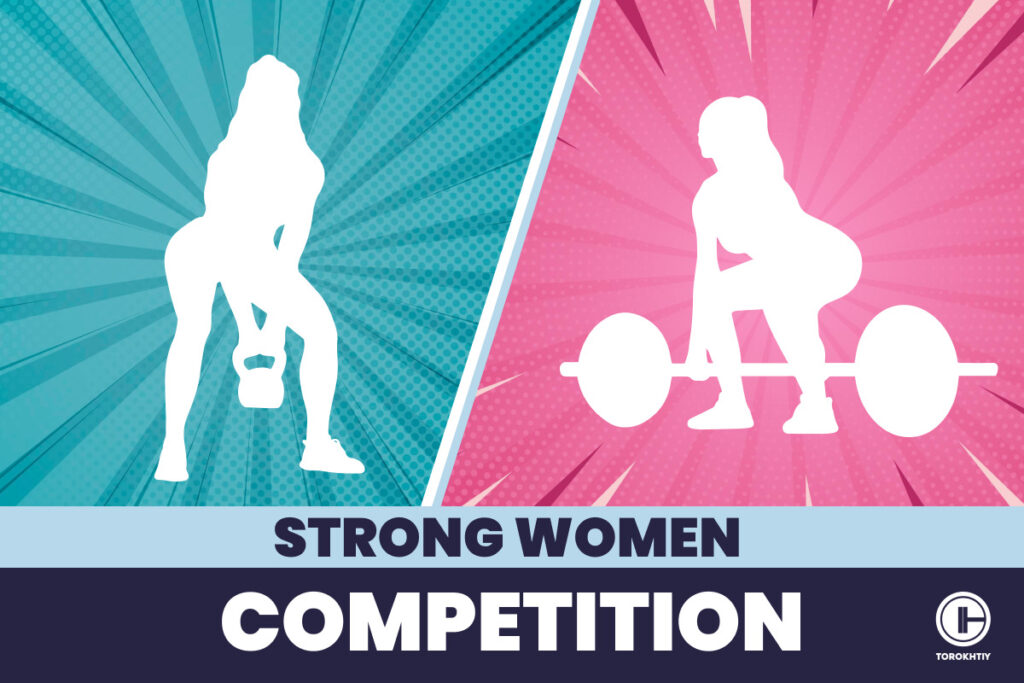
Strong Women Competitions: Its Origin and Objectives
Female Strongman is a sport where strong women compete, which gained high popularity among female athletes over the past ten years, so now there is a clear qualification for amateur female athletes to progress to the international level, and eventually compete among professionals.
Originally, the word “strongwoman” referred to female competitors in the following competitions such as the World’s Strongest Woman and Arnold Pro Strongwoman contests, which are recognized by the International Federation of Strength Athletes (IFSA) and Arnold Sports Festival.
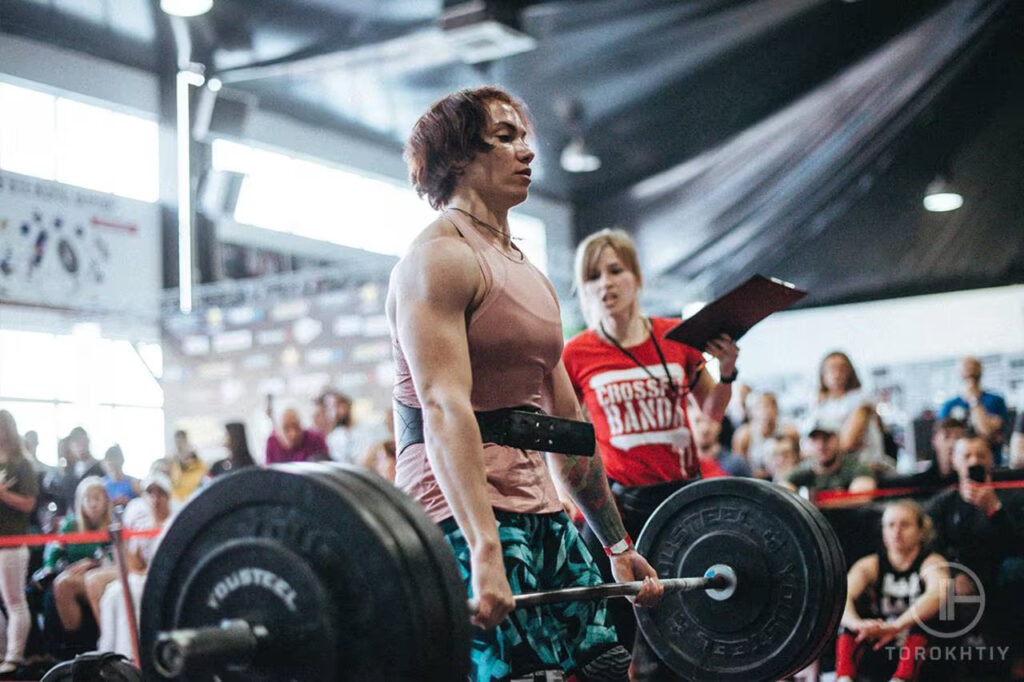
Although, first strongwomen historically performed in circuses, or music halls, showing their strength by performing various events like moving heavy objects and juggling people. But, nowadays strongwoman athletes are treated equally as strongmen.
Female participants perform similar movements to those in official strongman competitions.
You may like it: Effective Strongman Training Program To Gain Max Strength
The History of Strong Women Competitions: The Start of Perception of Women in Strength Training
The first female competition was sanctioned by the International Powerlifting Federation in 1979, with the first women’s Powerlifting World Championship held in 1980.
The International Weightlifting Federation followed the sample of the IPF in 1986, with 23 athletes from five countries competing. This strongwoman contest was arranged and supported by a famous “queen of muscle beach” Abby Stockton. She was involved in the organization of the first female weightlifting events and she advocated women in the sport until her death in 2006.
In 2000, a women’s category for weightlifting was also added at the Olympic Games, with 85 athletes from 47 countries competing. While the World’s Strongest Woman’s first competition started in 1997.
Concerning cross-training, male and female competitions started at the same time. Considering societal ideas about women’s bodies, the emergence of female competition was a slow process.
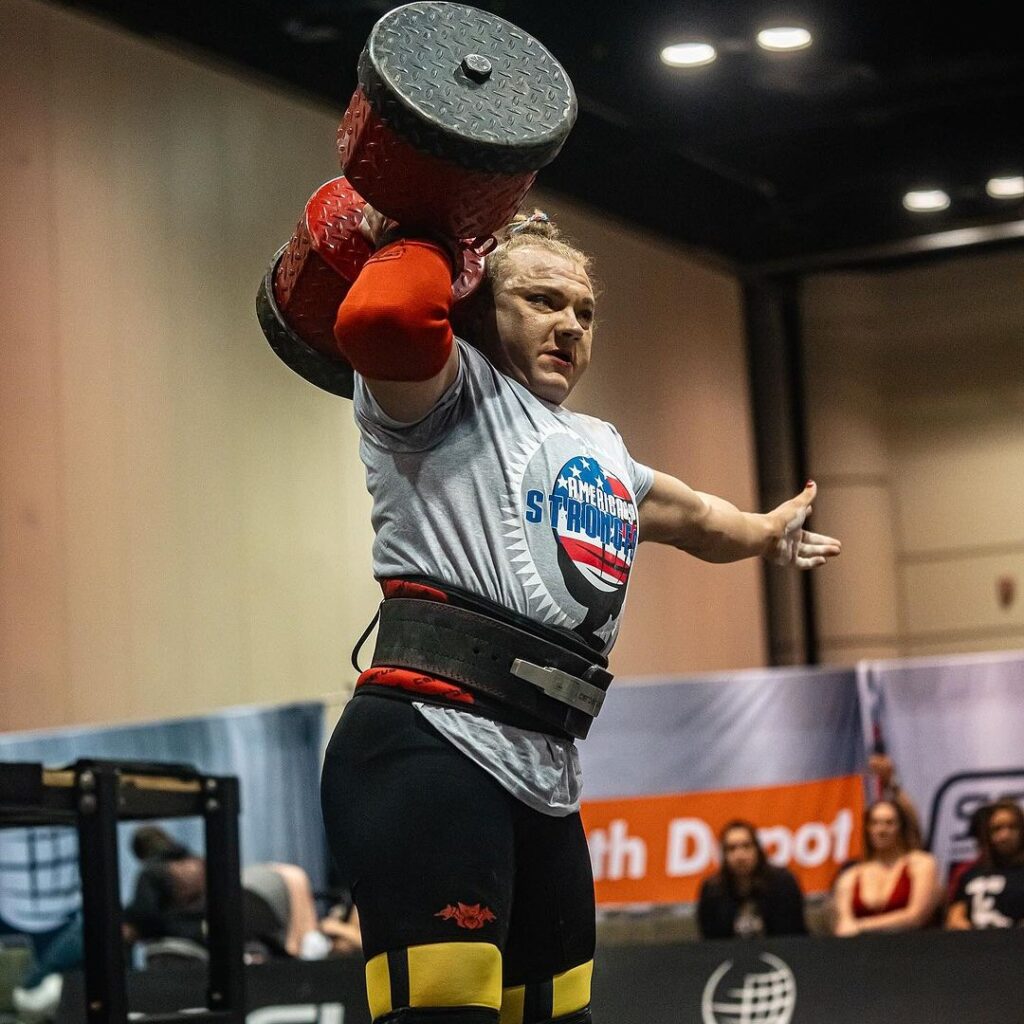
To be short, women in strength sports faced much resistance not only in their houses but also by male athletes and sports officials. It was accompanied by fears of getting ‘big and bulky’, ‘turning’ lesbian, or ‘becoming’ infertile.
On the contrary, strength training had a beneficial impact on women’s health, e.g., increasing strength and reducing pain.
However, in the 20th century, those sportswomen taking up weightlifting performed strength sports via training with their coaches, using weights to complement their sport-specific workouts and fitness goals. While others took up weightlifting with male family members.
Still, society needs to keep pushing the issue of women in weightlifting, for the future generation won’t think about the gender aspect when selecting what sport to take up. Namely, weightlifting is available for everybody, since strength sports is for everyone.
Follow us!

Free!
Get a 2-week Weightlifting Program as a bonus for the subscription to kickstart your training plan!

Free!
1. The Early History of Women’s Strength Training: The First Female Pioneers in Lifting
In the early and mid-1800s, British author Donald Walker and the American exercise proponent Dio Lewis promoted some form of lifting drills for women in order to preserve and improve beauty.
Physical culture was an early predecessor to our modern interest in being fit. However, in the past, there was a tendency to focus just on the muscular male bodies. Still, there were the early strong women from that time.
Let’s recall some of them: in the period from 1890 to 1918 three female lifters dominated: Katie Sandwina, Vulcana, and Minerva:
- Sandwina, from Germany, could press 200 lbs overhead easily, lifting her husband in the air with one hand, and supporting numerous heavy objects on her back.
- A Welsh-born strongwoman, Vulcana, got a medal for her athleticism, due to her bent arm press of anywhere from 120 to 145 lbs.
- The first recognizable competitive female lifters, Minerva issued a series of lifting challenges to other women through the National Police Gazette. With the support of the newspaper’s editor, she welcomed all challengers to best her in lifting a 300 lb barrel to her shoulders. When it was clear that no one could defeat Minerva, Fox, the editor, declared her the strongest woman in the world.
2. The Evolution of Strong Women Competitions: The Creation of First Powerlifting and Weightlifting Associations
Over time, besides strongwomen competitons, another vital step towards promotion of the competitive female strength sports was creating a female bodybuilding competition. In 1901, the first bodybuilding show for British men was hosted by Eugen Sandow.
He was a renowned bodybuilder and showman who attempted to arrange a similar show just for female culturists. However, his efforts finished with no success as British women refused to enlist to those events.
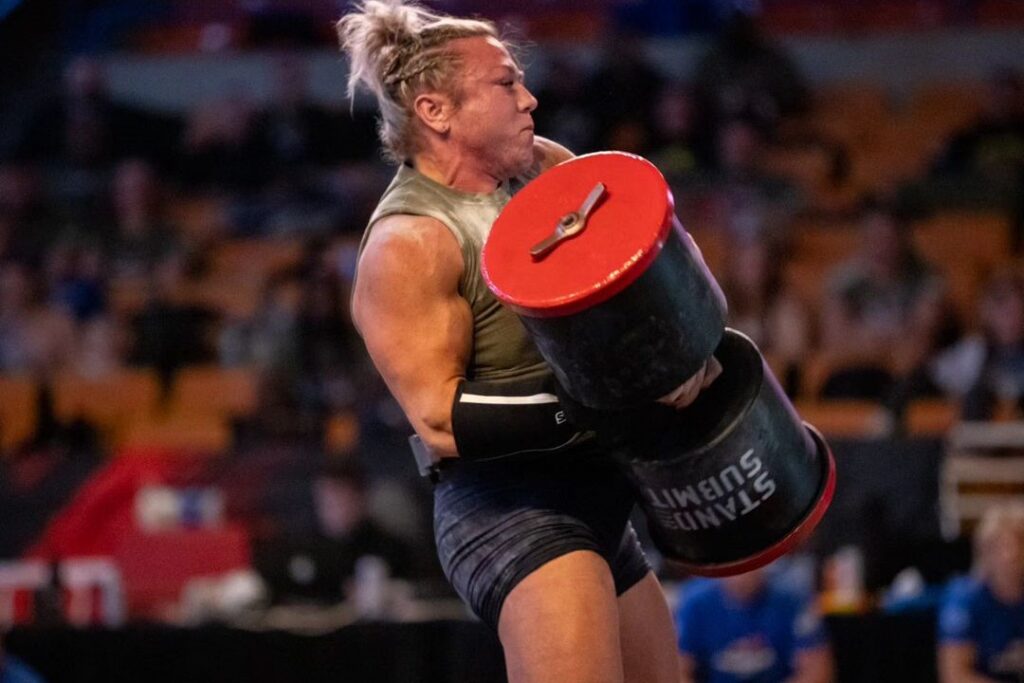
Nevertheless, the above-mentioned competitions and physical culture in general promoted the idea that strength training is acceptable and normal for women. These were the first tries to incorporate strongwomen competitions in the 1930s and 1940s.
In that time, two powerful women caught the public’s attention: Ivy Russell and Pudgy Stockton. Ivy popularized the official female weightlifting in Britain prior to the Second World War. Her lifts were based on sanctioned exercises like the deadlift or clean and jerk. Ivy could deadlift over 400 lbs at her peak form.
Over time, she successfully petitioned the British Amateur Weightlifting Association to host an official competition for females in 1930. This event made Ivy become one of the first official women’s champions.
Concerning Pudgy, she became the face of women’s lifting and bodybuilding in America during the 1940s. She was an adept in calisthenics and Olympic weightlifting, organizing the first official weightlifting competition for women in America. Moreover, she became America’s first female bodybuilding champion.
From 1945 to the late 1960s female weightlifting became more permissible. However, the idea that women should use lighter weights than men as they could become more masculine, was still present in the society. But, there was a slow, but steady progression of women’s strength training.
That was the reason for the start of new powerlifting, bodybuilding, and weightlifting organizations during this period. Such organizations managed to even encourage women to set up lifting organizations of their own.
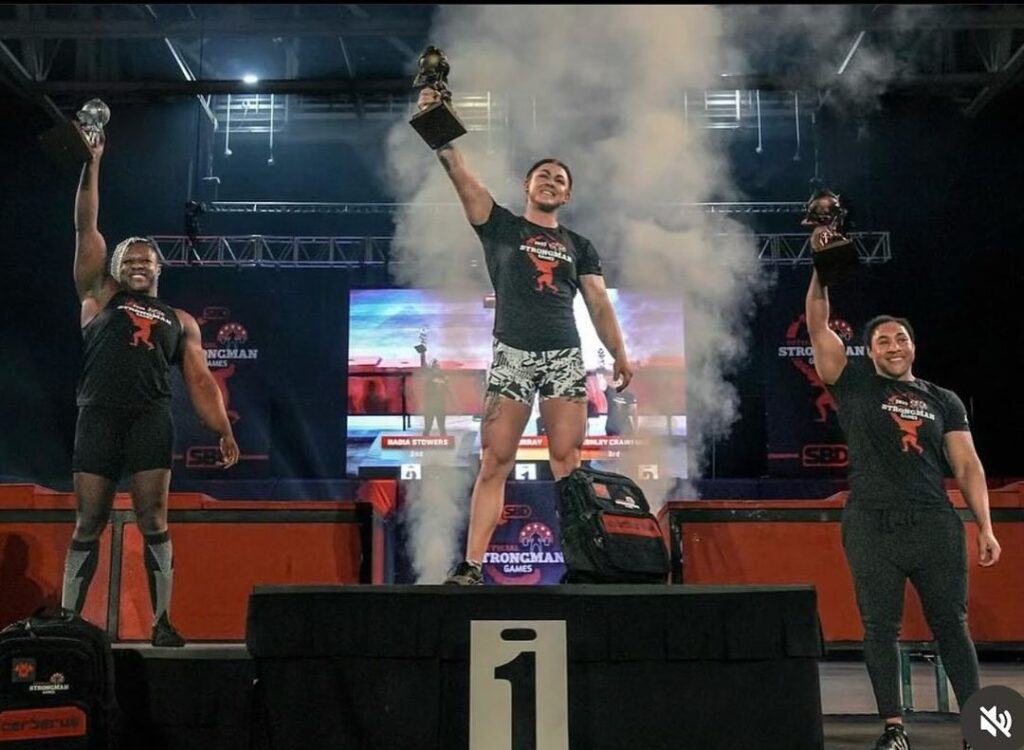
Over 30 years, from the mid-1970s, Jan and Terry Todd began promoting sanctioned female powerlifting competitions. Finally, the community responded positively when the first official All-American Women’s Open was hosted in 1977.
It was the first powerlifting contest for women. In 1980 the first World International Powerlifting Federation for women was created.
3. Current State of Strong Women Competitions: The Final Steps for Approving Women in Weightlifting Events
Female Olympic weightlifting was the next step for developing female weightlifters. Officially held competition for women in the early 1980s showed new strongwomen where Karyn Marshall and Judy Glenney were among the leaders.
Glenney won the first American national women’s meet held in 1981. While Marshall entered the Guinness Sports Record Book in 1984 for a clean & jerk of 289 lbs, beating a prior record held by Sandwina.
In 1987 the World Weightlifting Championships featured the first female division. In several years, the International Olympic Committee included women’s weightlifting at the Olympic Games. So, as we already mentioned, the 2000 Summer Games in Sydney made history by welcoming female weightlifters all over the world.
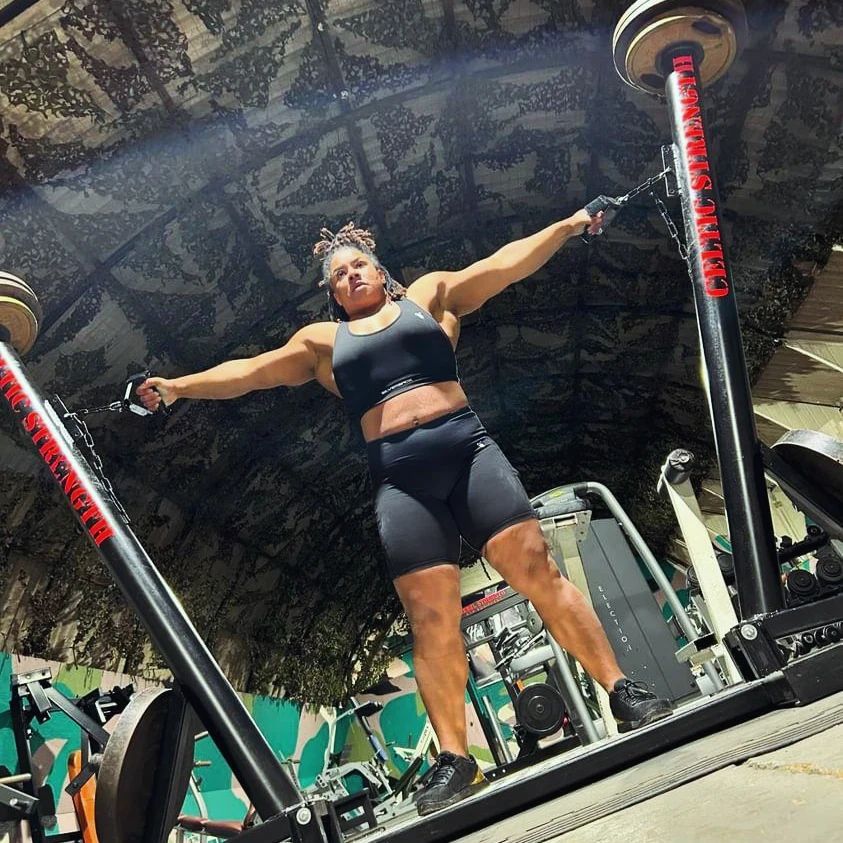
So, due to this event, now we have the world’s strongest woman winners who impress the audience with their power equal to men. Rebecca Roberts, Olga Liashchuk, Donna Moore, and Andrea Thompson are the leaders of the latest strongwomen competitions.
The final step in women’s weightlifting was hosting the first cross-training competition in 2007. This was the first time that the Games were the first time when male and female weightlifting categories were established at the same time.
The Role of Strongwoman Competition in Society and Its Impact on Females in Sports
Despite the fact that women’s weightlifting and physique building was of secondary concern in the twentieth century, many interested women were forced to wait decades before they could join strength competitions.
There are still some disparities and arguments concerning male and female lifting, however women got their right to take up powerlifting, Olympic weightlifting, cross-training, or strongwoman competitions.
Strength training, in particular participating at the strongwoman events, enables women to express their inner and outer power by being dedicated to strength sports. This way they can fulfill their sports goals and show their strong nature after experiencing both highs and lows. Moreover, they manage to maintain musculoskeletal integrity and weight loss.
While competing in a strongwoman contest gives them much more than just physical strength. What’s more, strength-related training influence positively the overall body state, namely studies show a decrease in pain in women with fibromyalgia.
Conclusion
Revealing the history of women’s strength training and their involvement in strongwomen competitions, it’s clear that women were always struggling to express their dedication to weightlifting, till their official representation at the Olympics in 2000.
Still have questions about Strongwomen? Leave your comments below, our sports experts will give a consistent overview.
Also Read:
- Strongman Vs Bodybuilding: Which Path to Choose?
- Effective Strongman Training Program to Gain Max Strength
- 10 Strongest Women in the World: From the Origin Till Now
- Why are Strongman Fat: Organism Adaptations, Proper Diet & Training
References:
- Alexandro Andrade, Ricardo de Azevedo Klumb Steffens, Sofia Mendes Sieczkowska. “Acute effect of strength training on pain in women with fibromyalgia: A brief report”, Journal of Back and Musculoskeletal Rehabilitation, vol. 34, no. 2 (2021), p. 313-318.
- Kai Nestler, Alexander Witzki, Ulrich Rohde. “Strength Training for Women as a Vehicle for Health Promotion at Work”, Deutsches Arzteblatt International, No.114(26) (2017): p. 439–446.
- Aishwarya Vasudevan, Elizabeth Ford. “Motivational Factors and Barriers Towards Initiating and Maintaining Strength Training in Women: a Systematic Review and Meta-synthesis”, Prevention science, no.23(4) (2022), p.674-695.
- Rachelle Burrup, Larry A Tucker, James D LE Cheminant. “Strength training and body composition in middle-age women”, The Journal of Sports Medicine and Physical Fitness, no.58(1-2) (2018), p.82-91.
- Jan Todd, Ph.D. “From Milo to Milo: A History of Barbells, Dumbells, and Indian Clubs”, Iron Game History, Volume 3, No.6: https://www.starkcenter.org/igh/igh-v3/igh-v3-n6/igh0306c.pdf
- Jan Todd. “Center Ring: Katie Sandwina and the Construction of Celebrity.” Iron Game History, 10.1 (2007): 4-13.
- Photos made by Torokhtiy Media Team.
Why Trust Us?
With over 20 years in Olympic weightlifting, strength training, nutrition coaching, and general fitness our team does its best to provide the audience with ultimate support and meet the needs and requirements of advanced athletes and professional lifters, as well as people who strive to open new opportunities and develop their physical capabilities with us.
By trusting the recommendations of our certified experts in coaching, nutrition, and sports training programming, as well as scientific consultants, and physiotherapists, we provide you with thorough, well-considered, and scientifically proven content. All the information given in the articles concerning workout programming, separate exercises, and athletic performance, in general, is based on verified data.
The product testing process is described in more detail here.
Author: Sergiy Osipchyk
Strongman Coach,
Former coach of Oleksiy Novikov and Pavlo Nakonechnyy
Strongman Experience: 10+ years
Sergiy has been involved in strength sports since he was 10 years old, and already started coaching when he was just 15 years old.
He helps clients of any age and experiences achieve results using an individual approach, daily process control, consultation and training knowledge and techniques, total experience is more than 20,000 individual training sessions.
Sergiy has trained a roster of renowned PRO strongman athletes including Oleksii Novikov, Pavlo Nakonechnyy and many other.
Reviewed by: Oleksiy Torokhtiy
Olympic Weightlifting Champion, PhD in Sport Science
Best Results: Snatch – 200 kg,
C&J – 240 kg
Oleksiy Torokhtiy is a professional athlete boasting 20 years of experience in Olympic weightlifting. With multiple European and World titles under his belt, he has showcased his prowess in two Olympic Games (Beijing 2008 and London 2012). Upon concluding his illustrious career, Oleksiy dedicated himself to coaching. By 2022, he had conducted over 200 weightlifting seminars worldwide. He is the visionary behind an international sportswear and accessories brand known for its motto, “Warm Body Cold Mind.” Additionally, he is an esteemed author and the creator of a series of training programs and eBooks.

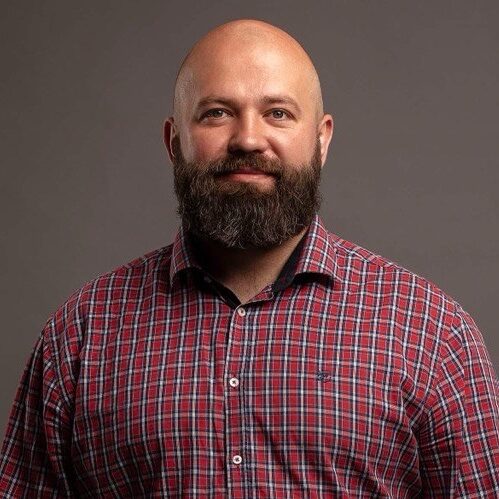


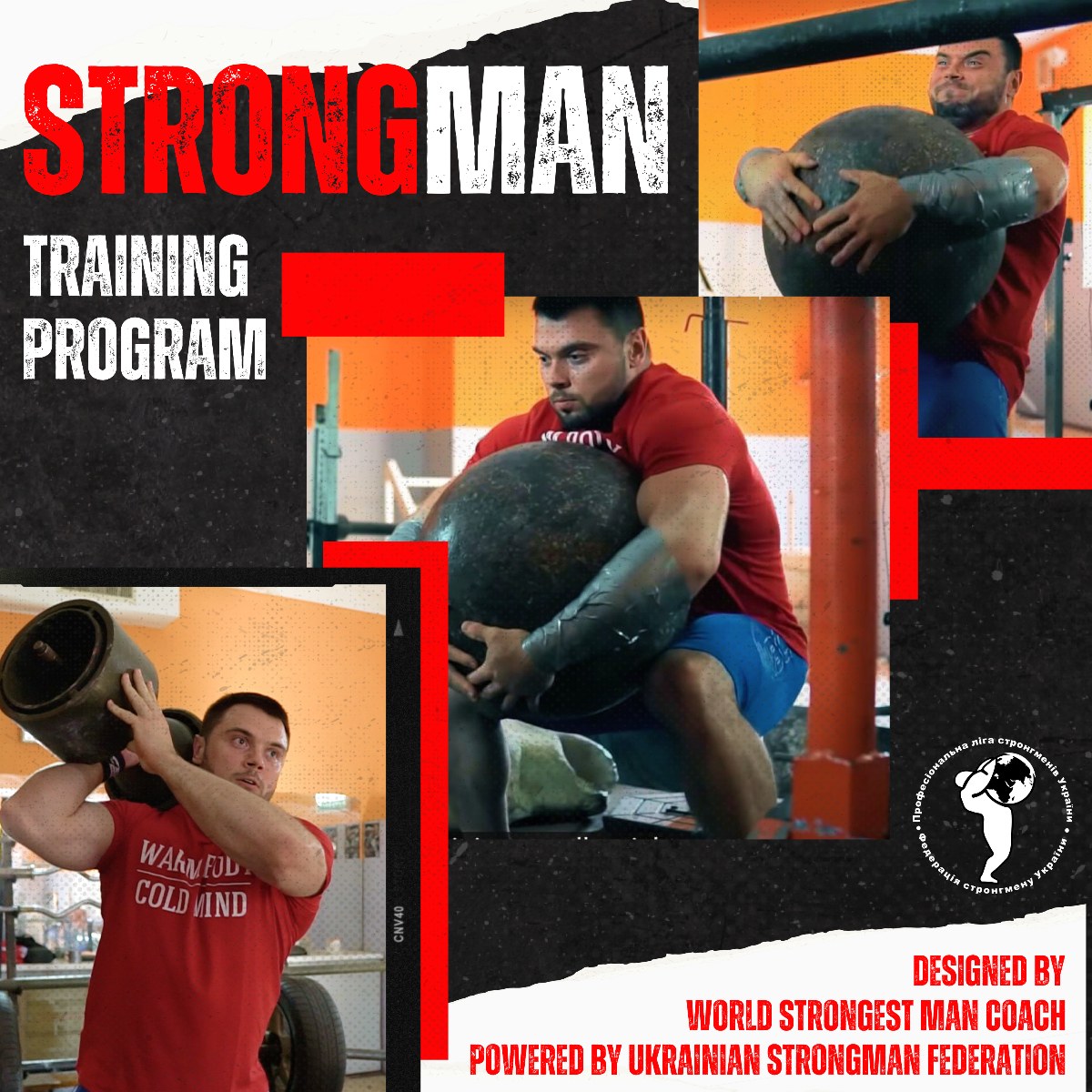
Still have questions after reading our article? Unlock your full potential by engaging with our experts and community! Don’t hesitate — leave a comment below and Sergiy Osipchyk will provide a personalized answer and insights to help you reach your goals.